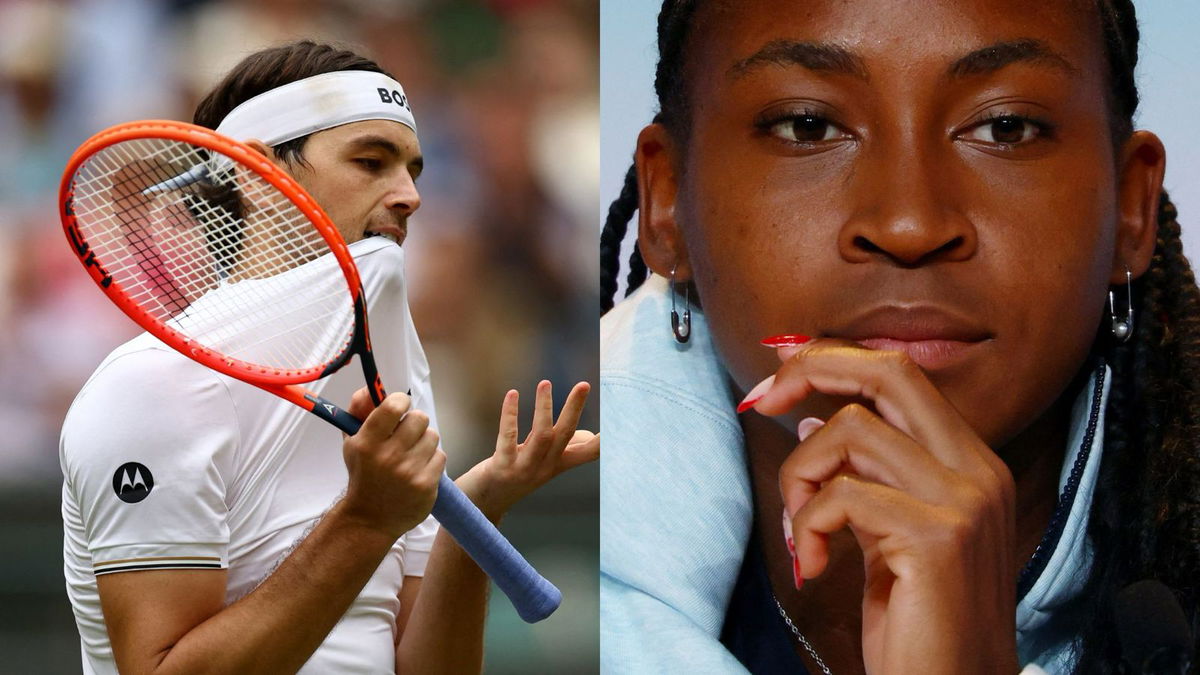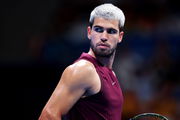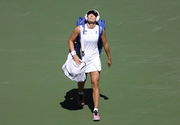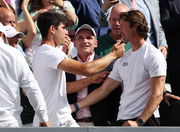
Imago
Image credits: imago

Imago
Image credits: imago
Carlos Alcaraz laid it bare last year, voicing the burnout that brews beneath tennis’ glittering surface. “Sometimes I didn’t feel motivated at all… the calendar is so tight, a lot of tournaments, no days off,” he confessed with raw honesty. His words echoed the growing frustration among players, a fire that fueled the Professional Tennis Players’ Association lawsuit in March, calling the relentless 11-month calendar “unsustainable.” Now, that chorus has grown louder. As the North American hard-court grind heats up, major stars are pulling out of Canada’s US Open warm-up. With major names now withdrawn, Coco Gauff and Taylor Fritz now carry the American hopes amid the scheduling storm.
Watch What’s Trending Now!
The tennis calendar is a marathon, not a sprint. But for players grinding week after week, sometimes even a champion’s spirit bows to the toll. Roland Garros and Wimbledon, two of the sport’s grandest stages, unfold within a month of each other. As soon as the final ball is struck on the lawns of SW19, the charge to the US Open begins. And this year, that sprint has turned into a storm of withdrawals on both the ATP and WTA fronts.
Fatigue isn’t just a word anymore; it’s a movement. Just this week, the 30-year-old Ons Jabeur became the latest casualty, pulling out of the Canadian Open in Montreal. Dutchwoman Suzan Lamens will now fill her spot in the draw. Jabeur joins a swelling list of high-profile absentees, including World No.1 Aryna Sabalenka, No.10 Paula Badosa, and Britain’s Sonay Kartal, all citing physical or mental fatigue and injuries as the breaking point.
ADVERTISEMENT
Recently, veteran ITWA member Michal Samulski revealed the newly formed seeding lists. On the women’s side, Coco Gauff now leads the American charge, joined by Jessica Pegula, Amanda Anisimova, Madison Keys, Emma Navarro, Sofia Kenin, Ashlyn Krueger, McCartney Kessler, and Peyton Stearns. For the men, the list may be leaner, but the fire is intact: Taylor Fritz, Ben Shelton, Frances Tiafoe, Tommy Paul, Brandon Nakashima, and Alex Michelsen now shoulder the US hopes heading into the North American 1st Master’s tournament.
WTA1000 Montreal and ATP1000 Toronto seeded players pic.twitter.com/enzQtmBcMJ
— Michal Samulski (@MichalSamulski) July 23, 2025
Sabalenka laid it out plainly in her official statement: “I’m looking forward to kicking off the North American hard-court swing, but to give myself the best chance for success this season, I’ve decided it’s in my best interest to skip Montreal.” Badosa, battling injury once again, followed suit. These absences have opened the floodgates for new faces. America’s Caty McNally and Japan’s Moyuka Uchijima step into the spotlight as the next generation seizes the moment.
ADVERTISEMENT
And the ripple doesn’t stop with the women. French Open semi-finalist Loïs Boisson became the latest to withdraw due to a nagging left adductor injury. “I [did] an echography this morning following the pain that I had on my left adductor during the tournament in Hamburg,” she explained, “and it appears that I need a little bit more time to rest and heal it properly.” One by one, names drop from the draw sheets, victims of a schedule that demands perfection at a pace beyond human limits.
Meanwhile, the men’s withdrawals have cast a long shadow. Carlos Alcaraz, the World No.2 and Wimbledon finalist, dropped a bombshell announcement just days after his London showdown. “I will not be able to play in Toronto this year,” he wrote. “I have small muscles issues and I need to recover physically and mentally for what comes next.” Novak Djokovic, Jannik Sinner, and Jack Draper followed suit, each citing wear and tear, groin pulls, or elbow issues. Draper, eyeing New York already, added: “See you in NYC!”
ADVERTISEMENT
And as the storm brews, the tennis world’s conscience speaks louder. A former two-time Wimbledon finalist recently echoed what many whisper behind closed doors. With champions dropping out and injuries mounting, the sport’s relentless schedule now stands at the heart of a boiling conversation.
Taylor Fritz voices frustration over grueling tennis calendar
Ons Jabeur’s bold decision to skip the Paris Olympics last year didn’t just raise eyebrows, it roared through the tennis world. The three-time Grand Slam finalist and former World No. 2 chose self-preservation over glory. Her knee, already burdened by relentless pounding, couldn’t afford the brutal switch from clay to hard courts. “I didn’t play the Olympics because of the surface changes. Since I have knee problems, it would be a very tough decision to take,” she explained. “It would probably make me not be able to play for the rest of the season. I’m managing my knee so much – probably people don’t know what’s happening on the inside.”
ADVERTISEMENT
Jabeur wasn’t the only one skipping clay’s final call last year. Aryna Sabalenka and Emma Raducanu joined her in pivoting toward the Citi Open in Washington, D.C., opting for North America’s summer swing instead. That decision made one thing painfully clear: the calendar isn’t built for the body, it’s built for the grind.
Taylor Fritz, the American spearhead and current top seed in the upcoming Masters 1000 events, echoed that sentiment loud and clear. “I mean, probably pretty much all the players for a long time have been asking for the season to be shorter,” Fritz said. “But all we are doing is just lengthening it, adding more stuff, we’re adding more, like, longer tournaments.” He didn’t stop there. Fritz exposed the irony at the heart of tennis scheduling. “I think it’s funny how we find ways to shorten the schedule to make room for other tournaments, but we can’t find room to shorten the schedule just for there to be nothing.”
Top Stories
Carlos Alcaraz’s Ex-Coach Breaks Silence on the Spaniard Days After Shocking Split

Iga Swiatek Opens Up About Financial Struggles and ‘Stressful’ Conditions During Her Childhood

Carlos Alcaraz’s Decision to Sack Juan Carlos Ferrero Over Money Deemed “Ridiculous” by Former Pro

Rafael Nadal Returns to Tour With a Surprising Twist for Rising Stars

3x Grand Slam Champion Confirms Australian Open Return at 41 After Shocking Comeback

The madness doesn’t stop in Montreal. As soon as the Canadian Open wraps up, the ATP and WTA caravans charge south to Cincinnati for another grueling 1000 event. And just five days after that, it’s the US Open, a Grand Slam with everything on the line, especially for Fritz, who has a mountain of ATP points to defend from last year’s final.
ADVERTISEMENT
Now that the draws are locked and the seeds are set, all eyes shift toward who can handle the heat. With Taylor Fritz and Coco Gauff leading the American fronts, will the crown stay home, or will chaos crack the court before Cincinnati even begins?
ADVERTISEMENT
ADVERTISEMENT
ADVERTISEMENT

